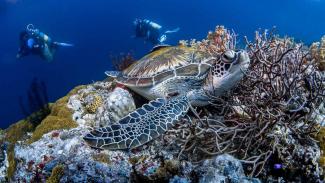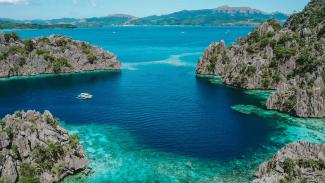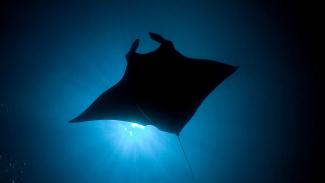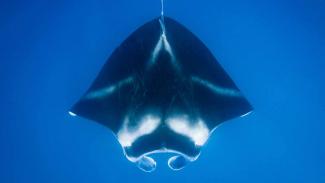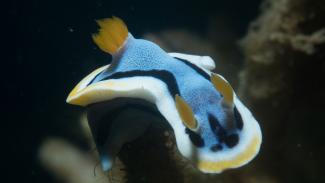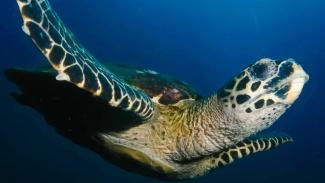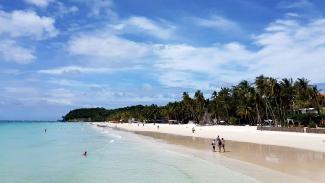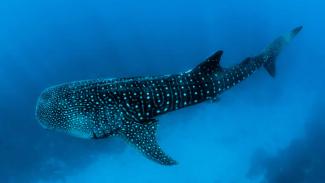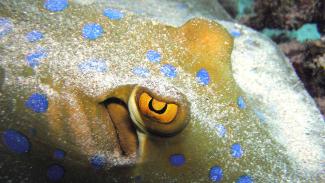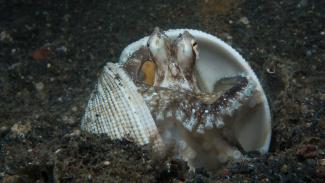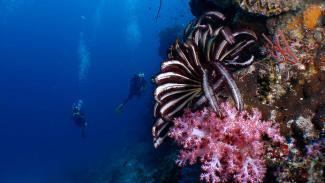Our independent guide to the top dive sites in the Philippines
From wonderful coral reefs to Asia's best wreck diving, superb liveaboards to swimming with Whale Sharks, the Philippines has something for every diver and snorkeller.
Head to Malapascua to dive with Thresher Sharks, Dauin for excellent muck dives, Tubbataha for the Philippine's best liveaboard diving or Balicasag in Bohol for wonderful turtle encounters. The choice is yours.
Made up of 7,000 islands, the country's coastline touches the waters of the Pacific Ocean, the South China Sea, the Celebes Sea and the Sulu Sea. For scuba divers, the Philippines is a country of almost endless variety.
Find out everything you need to know about diving in the Philippines with our independent guide.

Sebastian Pena Lambarri
Highlights
What are the top diving sites in the Philippines?
Due to its great variety of dive spots, there are many different options available for scuba divers in the Philippines. There are calm shallow areas for beginners, plunging wall dives, some of the world’s best wreck dives, endless opportunities for eager underwater photographers and good shark encounters too.
Out in the Sulu Sea and only accessible by Liveaboard, Tubbataha Reef offers an abundance of big fish action, from huge Groupers and Tuna to numerous species of Sharks and giant Manta Rays.
Cebu, in the Visayas is also a popular dive area. Cebu City is the Philippines second largest city and has an international airport, meaning that many of the dive sites are easily accessible.
Mactan Island is probably the most convenient base for divers visiting Cebu. Further afield, Malapascua is known as the best place to see Thresher Sharks. Moalboal also has some stunning dives and is a great place for photography, with beautiful corals, abundant reef life and some great underwater scenery. Visitors can also dive or swim with Whale Sharks at Oslob.
Also in the Visayas, Bohol is rich with diversity, coral gardens and occasional pelagic species, while southern Leyte is also known as a great place to swim with Whale Sharks.
Puerta Galera is one of the Philippines best-known and most established dive spots. Situated just a few hours south from Manila, the capital - it offers convenient access, good tourist facilities and great diving, with a large variety of reef inhabitants, wrecks and some pelagic action too. Also easily reached from Manila, Anilao is a recommended option for budding underwater photographers.
Around Palwan to the west are the Japanese WWII wrecks of Coron Bay; Apo Reef, with its huge expanse and variety of corals, plunging walls and diversity of both reef and pelagic species; plus little El Nido.
Keen to find out more? Skip on through to our detailed review of all of the best diving sites in the Philippines.
What marine life can you see in the Philippines?
With its location, variety of habitats and nutrient-rich waters, the Philippines offers a wealth of marine life to see. For shark lovers, it is probably one of Asia’s best dive destinations, with Reef, Grey, Thresher, Hammerhead and Whale Sharks all regular visitors. Manta Rays and Eagle rays are also often seen, along with five of the world’s seven Sea Turtles.
Along with Indonesia, the Philippines are thought to have the the highest levels of marine diversity on earth and also an incredible abundance of marine species, with many reefs simply teeming with life. For lovers of smaller marine life, it is also possible to find Frogfish, Seahorses, Ghost Pipefish, Mandarinfish and many more rare and exotic creatures.
Ease of Travel
There are international airports in Manila & Cebu, providing access to many of the Philippine's dive locations. There are also many domestic airlines & routes between the islands, making the Philippines relatively simple to travel around.
The islands are also connected by a ferry network, but schedules are difficult to obtain, journey times are long and ferries are often old. Unless you have a lot of time and very little money, flying is generally recommended for longer journeys. Ferries and fast boats between nearby diving spots, particularly in the Visayas, are a good way to island hop shorter distances.
People
Filipinos are known as a friendly & hospitable people. Many Filpinos, while having origins in China, have Hispanic influences from colonial rule and the country has a Roman Catholic majority. More recently, the proliferation of American military bases has left a strong American mark in the culture. Most of the population lives in Luzon or Cebu.
Safey
The Philippines is generally a safe country to travel and visitors are made to feel welcome. Petty crime of course can happen too, especially in the major cities, so make sure you take the usual precautions.
Older buses & especially ferries are not up to western standards and are often over-crowded and under-maintained, so it is advisable to exercise caution if you have to travel this way.
Political difficulties in the far south makes this an area to avoid.
In terms of the diving, some of the Philippines’ dive sites have strong currents, so make sure that you have enough experience before you dive the more advanced sites and ensure your dive operator takes all the necessary safety precautions.
Swimming with whale sharks in the Philippines
In the Philippines, diving with Whale Sharks (and swimming with Whale Sharks) has become all the rage in recent years. And no wonder. The islands of the Philippines are thought to be home to an astonishing 1,600 whale sharks. According to a study by Wildbook for Whale sharks and the Large Marine Vertebrates Research Institute Philippines the Philippines has the second largest population of Whale Sharks in the world!
Whale Sharks are truly incredible animals. The largest fish in our oceans, they are gentle, curious plankton feeders who are thought to have been around when dinosaurs still roamed the earth. Diving or swimming with Whale Sharks is, without doubt, a special experience that will live long in the memory.
Despite the number of Whale Sharks in Philippine waters, it is not realistic to expect to drop in anywhere and bump into one. So where are the best places in the Philippines to see Whale Sharks?
Southern Leyte, Oslob and Donsol are the best places to encounter one of these gentle giants. Southern Leyte, the least visited of the Visayas Islands, is a wonderful place to swim with Whale Sharks, which congregate here in sizable numbers from November to May. Within a key zone, diving with Whale Sharks is not permitted, but snorkelling can bring advantages in maneuverability - Whale Sharks move deceptively fast! The Whale Sharks do not necessarily obey the protected zone however and divers frequently encounter them on dives in the region. Southern Leyte offers great visibility and a superb range of dive sites aside from Whale Sharks encounters.
Oslob is another outstanding place to swim or dive with Whale Sharks. This small fishing community has offered some of their catch to local Whale Sharks as an offering to these impressive animals, resulting in a population of Whale Sharks in the region. Oslob can be very busy, but that does not take away from the quality and reliability of the Whale Shark sightings.
Similar to Oslob, Whale Shark excursions in Donsol are managed by the local marine rangers. Sightings at Donsol are very consistent, with large numbers of Whale Sharks gathering here between November and May each year. Visibility is often not as good as at Oslob or Leyte, with swimming with Whale Sharks only.
Whale Sharks can also be seen on a liveaboard to Tubbataha, particularly towards the end of the diving season here in May and June.
Interested to learn more about Whale Sharks? Check out our Reef Spotter Guide to Whale Sharks!

Tara North

Miraluna Becher
Diving liveaboards in the Philippines
Diving liveaboards have become very popular with scuba divers over the past twenty years. These floating dive resorts offer convenience and the opportunity to dive many times each day. They also allow divers access to dive sites that are difficult to reach while day boat diving or cover a larger range of dive sites without packing up and changing location.
The Philippine’s most renowned liveaboard diving is in Tubbataha. These remote and spectacular atolls can only be reached by liveaboard between March and June each year. Those who make the journey to the centre of the Sulu Sea will be rewarded with astounding reefs and thrilling marine life, including Manta Rays and numerous species of Shark.
Looking for the latest liveaboard deals in the Philippines? Find your deal
Another classic liveaboard itinerary in the Philippines takes in Apo Reef, another site difficult to reach while diving from resort, and the wrecks of Coron Bay. This itinerary often begins in Puerto Galera, finishing in Coron Bay, or operates in reverse.
For the remainder of the year, many Philippines liveaboards tour the superb Visayas region, including Malapascua, Bohol, Oslob, Dumaguete and more. All of these diving areas can also be dived as day trips, but liveaboards allow divers to see many of the dive sites of the Visayas in one adventure.
Diving liveaboards in the Philippines are generally between 6 and 11 nights in duration.

Cris Tagupa




